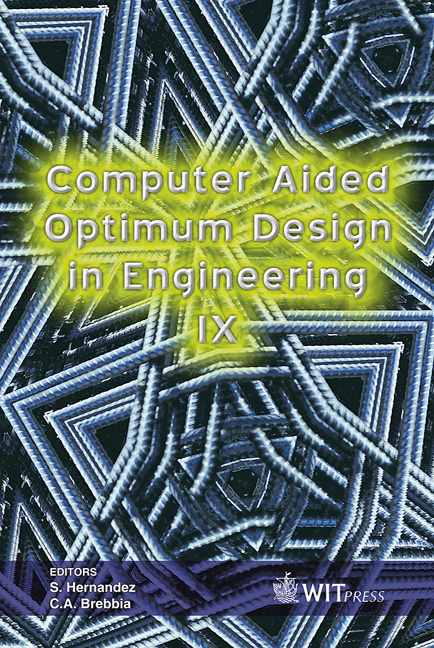Compression Modelling Of Pin-jointed Trusses
Price
Free (open access)
Transaction
Volume
80
Pages
9
Published
2005
Size
388 kb
Paper DOI
10.2495/OP050171
Copyright
WIT Press
Author(s)
S. D. Waller & K. A. Seffen
Abstract
A method is presented for including imperfections within the analysis of pinjointed trusses, without requiring several beam elements to model each strut. A non-linear material model is used to represent the loss of stiffness due to elastic buckling, before the critical Euler load is reached. The model is used to assess the validity of assuming a perfect structure, which is common for size, shape and topology optimisation of trusses. Applying the model to investigate the stiffness of tree-like structures for roofing supports is presented, along with the future extension of the model to truss-columns. Keywords: non-linear buckling, truss optimisation, critical slenderness, bowing deformation. 1 Introduction Pin-jointed trusses are used for applications such as transmission towers, space and roofing structures. Triangulated truss structures are inherently efficient and lightweight, because the members are used in tension and compression only, modes in which they are more effective than when subject to bending. Finite element analysis of such trusses is comparatively simple, because each node only requires one degree of freedom, to account for axial force in the local co-ordinate system. The treatment of compression is also greatly simplified because each member is pin-ended and undergoes Euler buckling. When optimising the size, shape and/or topology of truss structures, it is necessary to evaluate the structural performance of many different configurations, with minimal computational cost. It is common to find the minimum weight structure that satisfies various constraints, such as stress, displacement and buckling. Each finite element analysis is usually linear, and assumes perfectly straight members.
Keywords
non-linear buckling, truss optimisation, critical slenderness, bowing deformation.





